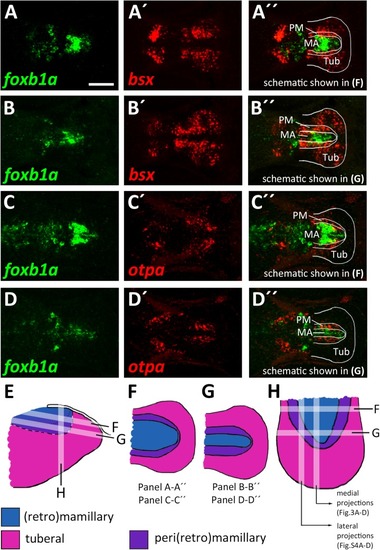- Title
-
Conserved Genoarchitecture of the Basal Hypothalamus in Zebrafish Embryos
- Authors
- Schredelseker, T., Driever, W.
- Source
- Full text @ Front. Neuroanat.
|
Gene expression domains demarcate alar and basal territories within the secondary prosencephalon as well as tuberal and mamillary subregions within the basal hypothalamus. |
|
|
|
Longitudinal and transverse subdivisions of the mamillary regions based on conserved gene expression domains. |
|
Radial organization of the basal hypothalamus. |
|
Longitudinal and transverse subdivisions of the tuberal hypothalamus based on conserved gene expression domains. |
|
|
|
Schematic representations of gene expression patterns in subdomains of the basal hypothalamus. |







